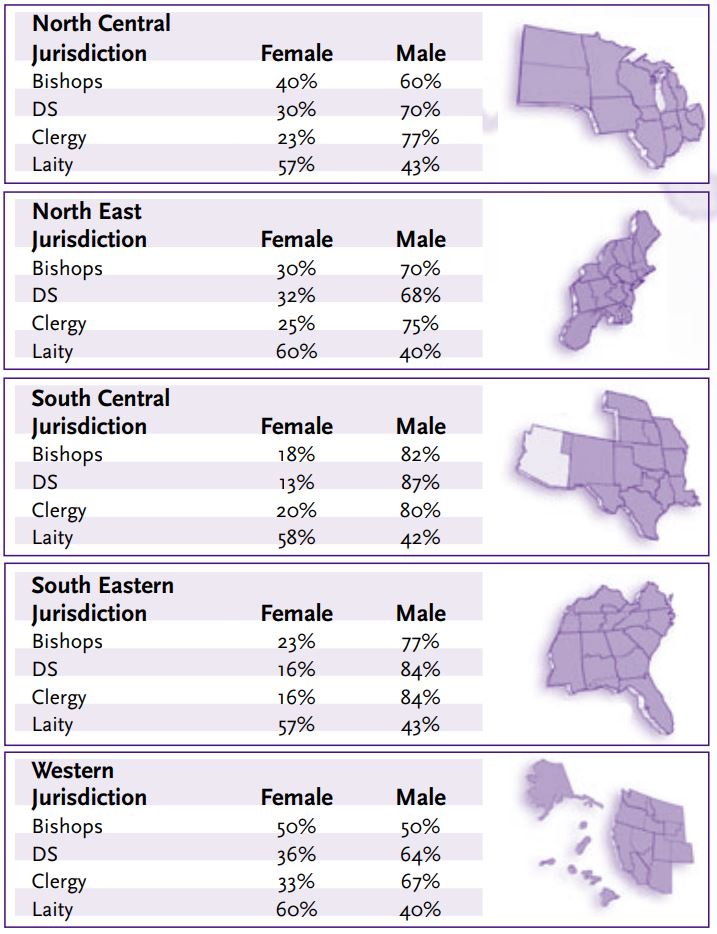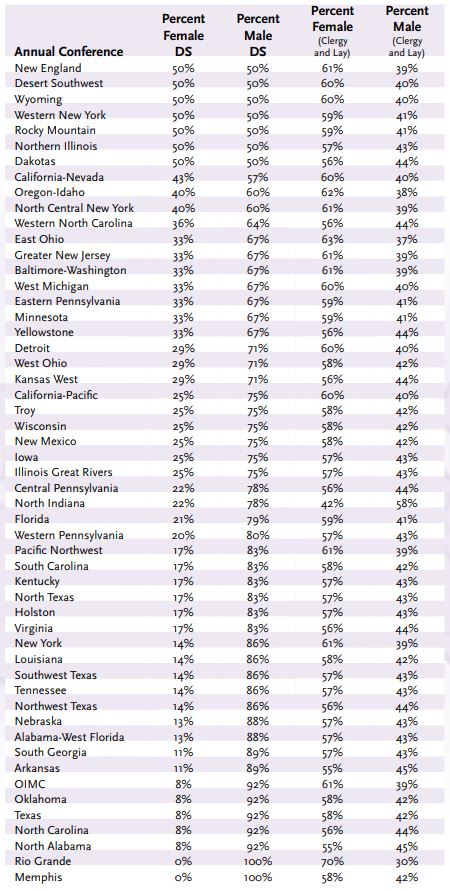Southeastern, South Central jurisdiction trail other regions in women DS’s
Twenty-three percent of the district superintendents serving The United Methodist Church in the United States are women. This compares favorably to the 21% of the clergy in denomination who are women (see table on facing page). From this vantage point, clergywomen are represented in positions of leadership across the denomination.
However, not all annual conferences have 23% or more women district superintendents. Only half of the annual conferences (32) have 23% or more of their district superintendent positions filled by women. In the Alaska Missionary, Dakotas, Desert Southwest, New England, Northern Illinois, PeninsulaDelaware, Rocky Mountain, Western New York, and Wyoming conferences, women clergy account for 50% of the district superintendents in each annual conference. Interestingly, only Wyoming, Western New York, and the Dakotas have women bishops. Men oversee the remaining six annual conferences.
The Memphis, North Alabama, North Carolina, Oklahoma, Oklahoma Indian Missionary, Red Bird Missionary, Rio Grande, and Texas conferences have fewer than 10% of their district superintendent positions filled by women. Three of these annual conferences (Memphis, Red Bird Missionary, and Rio Grande) have no women superintendents. Of these eight annual conferences, only Texas is served by a woman bishop.
The data show that increasing numbers of clergywomen have translated into increasing numbers of women serving as district superintendents. The gains, however, have not been uniform, and much work still needs to be done to increase the role of clergywomen in leadership positions.
This lack of women in leadership positions can be seen most clearly when status-gender pyramids are constructed (see table below). These “pyramids” show the female and male breakdowns in each jurisdiction by status: lay, clergy, district superintendent, and bishop.
Percent Male and Female District Superintendent and Percent Male and Female Total Membership (Lay and Clergy) by Annual Conference, 2004

By comparing the data side-by-side—as in a pyramid—it allows, at a glance, the ability to see if a particular status is balanced; that is, if percentages are nearly equal, and if not, to which side it leans.
The pyramids show that with the exception of the laity status, all the other statuses lean toward men rather than women. Although it is worth noting that the status of bishop in the Western Jurisdiction is an equal 50-50% split.
The number of United Methodist laywomen exceeds that of laymen in each jurisdiction. The difference, though, is at most 20 percentage points, with both the Northeast Jurisdiction and Western Jurisdiction leading the way
The other statuses lean toward male dominance and do so by some very large differences. For district superintendents in the South Central Jurisdiction, there is a 74 percentagepoint difference between the number of male district superintendents and female district superintendents. Those numbers are almost identical in the Southeastern Jurisdiction.

